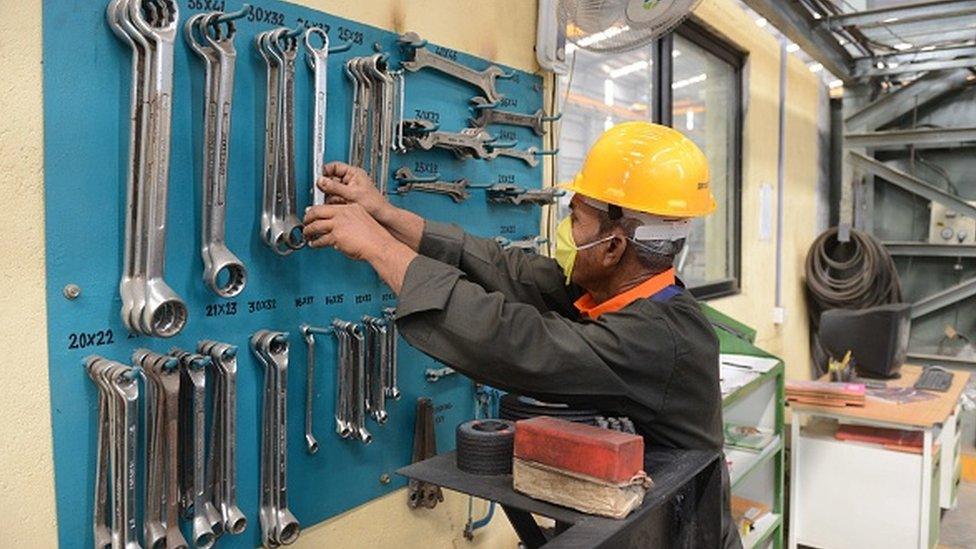Indian economic growth slows in December quarter of 2016
- Published

India's economic growth slowed in the December quarter of 2016, but the pace of expansion still beat expectations.
The 7% rate was slower than the previous quarter's rate of 7.4%, but beat analysts' expectations of 6.4%.
Economists had expected the economy to suffer from the government's decision to withdraw high-denomination banknotes as part of an anti-corruption drive.
The federal statistics office retained its growth forecast for the year ending in March 2017 at 7.1%.
The figures surprised economists, who had expected the economy to take a bigger hit from Prime Minister Narendra Modi's decision last November to withdraw old 500-rupee and 1,000-rupee banknotes, taking 86% of the currency out of circulation virtually overnight.
"Perhaps this data is not capturing the impact of demonetisation," said Aneesh Srivastava, chief investment officer at IDBI Federal Life Insurance.
"I am totally surprised and stunned to see this number... I believe that, with a lag, we will see an impact on GDP numbers."
Saugata Bhattacharya, a chief economist at Axis Bank, said "big rises" in agriculture and manufacturing "show that the impact from demonetisation on growth has been less than expected".
However, Rupa Rege Nitsure, chief economist at L&T Holdings, said the current year's growth "appears to be overstated as our National Accounts Statistics does not adequately capture activities from the unorganised sector".
"While the numbers make sense in terms of direction of change, their actual magnitude appears to be overstated," she said.
The so-called "unorganised sector" - made up of informal workers - is believed to account for about 40% of India's economy.
- Published20 January 2017
